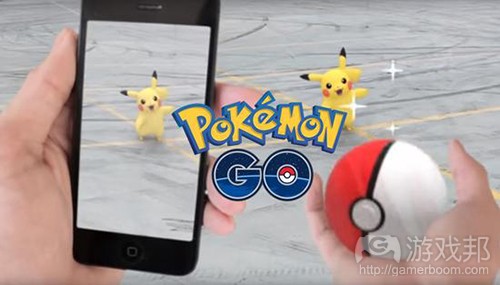如何面向玩家有效设置游戏中的目标
作者:David Mullich
与许多人一样,这周我也下载了《Pokémon Go》,这款全新的扩增实境(AR)游戏,即让玩家能够捕抓,战斗,训练并交易出现在现实世界中的虚拟Pokémon。这款游戏清楚地将自己的目标呈现在了标语中,即“抓住所有的一切!”当我在这周末外出时,我便会打开游戏应用并在周边搜索Pokémon,即尽自己所能去捕捉更多Pokémon。
所有游戏都拥有目标。就像游戏的目标可能是捕捉Pokémon,战胜对手,击退入侵的军队,探索一个新区域,创建一座城市,解决一个谜题,匹配掉落的组块,逃离一个被封锁的房间,在时间结束前完成一个任务,到达故事结局或拯救公主等等。如果没有目标,任何活动都只是在消遣而已,即不会带给玩家任何成就感。
目标能够提供给玩家前去争取的内容。它们将限定玩家在决定游戏结构和界限的规则中应该完成的内容。游戏可能拥有许多短期的较小目标(游戏邦注:如抓住你身边的Pokémon),也有可能拥有一些较长期的目标(如抓住所有特定类型的Pokémon),还可能拥有一些终极目标(即抓住所有Pokémon!)。
目标并不需要都是相同类型,也不需要玩家都基于相同技能。玩家技能可以大致分成三类:
身体技能。为了实现游戏目标,玩家必须使用某种形式的身体技能,如熟练操纵游戏控制器或快速打出正确的关键序列。
心理技能。为了实现游戏目标,玩家必须使用某种形式的策略技能,如在一款基于逻辑的益智游戏中想出正确的步骤顺序或巧妙使用资源去创造平衡的战斗单位而击败对手。
随机性。为了实现游戏目标,玩家必须克服可能阻碍自己前进的困难。如在一款角色扮演游戏中成功用剑击中一个小精灵或在一款博彩游戏中战胜对手。
大多数游戏都将这三种目标类型结合在了一起,尽管一个真正优秀的游戏设计师会谨慎使用随机性去为游戏添加多样性与不确定性。因为如果游戏中的随机性太多,玩家便会觉得自己的行动和决定不重要。保持关卡平衡的一种有效方法便是询问测试者需要多少身体,心理和随机性技能才能获得成功,让他们以1至5为标准进行评定,如果结果与你所期待的不同,你可能就需要做出一些调整了。
基于每个关卡需要相应地调整目标。最理想的情况是每个目标都必须具有如下特性:
清晰。游戏必须清楚地将目标呈现在玩家面前。不管是足够明确还是稍微含蓄,游戏都必须告诉玩家下一个目标是什么。一旦玩家完成了一个目标,游戏便需要将下一个目标展现在他们眼前。
可触及的。游戏必须提供给玩家足够的信息和资源去获取每个目标。也许不是在一开始就这么做,但是在玩家付出了一定的努力后,游戏必须让玩家能够最终实现目标。否则玩家便会带着绝望的心离开游戏。
具体的。游戏不应该让玩家去怀疑自己是否实现了游戏目标。最理想的情况是,游戏应该提供给玩家直接的反馈,即在玩家努力完成目标后告知他们是成功还是失败。
具有挑战性:游戏必须让玩家付出一定的努力才能实现目标(游戏邦注:除非游戏是一款不需要动脑,用于消耗时间的简单游戏)。这种努力可小可大,主要取决于游戏是休闲的还是硬核的,但如果玩家不需要付出任何努力便能够实现目标,他们便会因为无聊而离开。需要注意的是当玩家花时间去玩游戏时,他们便会更加熟悉该使用怎样的技能去实现游戏目标。这便意味着随着玩家技能的提升游戏目标难度也要相应地增加。
具有奖励性:玩家必须能在实现目标后感受到这么做的价值所在。有些目标会带给玩家在游戏中的益处,如推动玩家进程或为玩家揭开更多故事内容。这些都属于内在奖励。有些目标则会带给玩家一些外部奖励;如一些运动类游戏能够帮助玩家减重,而一些博彩类游戏则能够帮助玩家获得真钱。
所有的这些特性都是确保玩家处于心流状态的必要元素,玩家执行一个活动的心理状态是完全取决于全身心的投入以及享受活动过程的感受。当玩家在经历流时,时间将会暂时停止,这时候对他们来说没什么会比游戏更重要,他们也不会知道自己在游戏中投入了多长时间。正是这种流状态会让游戏变得吸引人,而适当的目标呈现与奖励则能够有效地维持流状态。作为游戏设计师的你必须始终牢记你的目标是吸引尽可能多的玩家并确保他们能够长期留在游戏中。
(本文为游戏邦/gamerboom.com编译,拒绝任何不保留版权的转发,如需转载请联系:游戏邦)
The Objectives Of Game Goals
by David Mullich
Like just about every other person with a mobile phone this week, I downloaded Pokémon Go, the new augmented reality game allowing players to capture, battle, train, and trade virtual Pokémon who appear throughout the real world. The goal of the game is stated clearly in the franchise’s slogan: Gotta catch ‘em all! And as I travelled about this weekend, I would open up the game app and search for Pokémon in the vicinity, pursuing the game’s goal of catching as many Pokémon as I could.
All games have goals, or objectives. The goal might be to capture all the Pokémon, outrace an opponent, destroy an invading army, explore a realm, build a city, solve a puzzle, align falling blocks, escape from a locked room, complete a task before a timer counts down, beat the odds, outwit an opponent, reach the conclusion of a story, or rescue the prince. Without a goal, an activity is simply a pastime, without any resolution or sense of accomplishment.
Goals give something for the player to strive for. They define what players are expected to accomplish within the rules that define the structure and boundaries of the game. Game might have many smaller goals that are short term (“catch the closest Pokémon to you.”) and a number of intermediate long term goals (“catch all the Pokémon of a given type) in addition to an ultimate goal (“catch ‘em all!”).
Goals need not all be of the same type nor demand the same skills from the player. Skills can broadly be classified into three categories:
Physical. To achieve the game’s goals, the player must use some form of physical skills, such as manipulating a game controller deftly or quickly typing the correct key sequence.
Mental. To achieve the game’s goals, the player must use some form of strategic skills, such as working out the correct sequence of steps in a logic puzzle game or wisely using resources to build a good balance of combat units for defeating enemy forces.
Randomness. To achieve the game’s goals, the player must overcome odds that could cause him or her to lose progress. This might involve the odds of successfully landing a sword blow on a goblin in a role-playing game or of beating an opponent’s hand in a gambling game.
Most games involve some combination of these types of goals, although a good game designer will be careful to use just enough randomness to add variety and uncertainty in the game. Too much randomness, and players will feel like their actions and decisions won’t matter. One good way to keep your skill level balanced is to ask playtester’s how much physical, mental and randomness skills, on a scale from one to five, are required to succeed in your game, and if the results are different from what you expected, you have some tweaking to do.
Goals need to be properly adjusted even at the individual level. Ideally, each goal should have the following qualities:
Clear. The player should never be position of not having an objective. The game should always clearly communicate, explicitly or implicitly, what the player’s next goal is. Once the player accomplishes one goal, the next goal should be immediately presented to the player.
Obtainable. The player should be provided with enough information and resources to actually achieve each of the game’s goals. Maybe not at first, but after a sufficient amount of effort, the player should be able to accomplish what the game asks. Otherwise, the player will leave the game in frustration.
Concrete. The player should never be in doubt about whether he or she has achieved the goals in a game. Ideally, the game should provide immediate feedback — that is, notification of the player’s success or failure — when the player attempts to accomplish a game goal.
Challenging. The player must expend some amount of effort in achieving the goal (unless the game is specifically understood by the player to be a mindless game, designed to simply pass the time with no effort). Now, that effort can be small or great, depending on whether the game is casual or hardcore, but if no effort at all is required to achieve the game’s goals, the player will leave the game out of boredom.Note that as players spend time playing the game, they become more adept at whatever skills are required to achieve the game’s goals. This means that goals must increase in difficulty as the player’s skill increases.
Rewarding. The player must find value in accomplishing the goal. Some goals benefit the player within the game’s context, such as by advancing the player’s progress towards the game’s conclusion or revealing more of the game’s story. These are intrinsic rewards. Goals that benefit the player outside the context of the game are extrinsic rewards; examples of extrinsic goals are exercise games that promote weight loss or gambling games in which players can earn real money.
All of these qualities are essential in keeping the player in a state of flow, the mental state in which a person performing an activity is fully immersed in a feeling of energized focus, full involvement, and enjoyment in the process of the activity. When players experience flow, time stops, nothing else matters and when they finally come out of it, they have no concept of how long they have been playing. This flow state is what makes games engaging, and the proper handling of the presentation and rewards for goals are essential for maintaining it. Remember that your own goal as a game designer is to catch as many players as your can, and to keep them engaged for as long as possible.(source:Gamasutra)
上一篇:分析电子游戏故事叙述的3个薄弱面








































 闽公网安备35020302001549号
闽公网安备35020302001549号